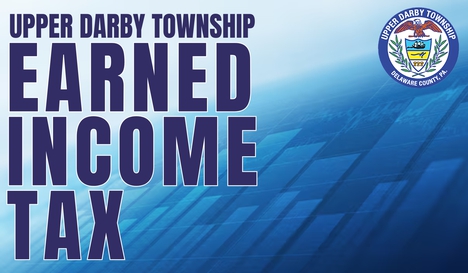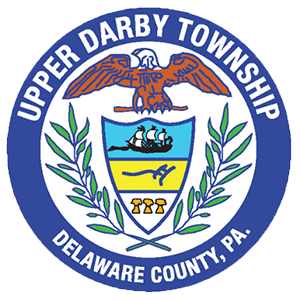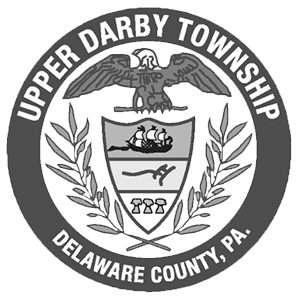
Press Release from Keystone Collections Group
(Who serves as the Earned Income Tax Collector for Upper Darby Township)
For Immediate Release: October 16, 2025
Upper Darby Township Enacts Local Earned Income Tax
Effective January 1, 2026
Upper Darby Township has enacted a local earned income tax beginning in 2026. All working residents of Upper Darby Township and nonresidents working in the Township are subject to the one percent (1%) tax on earned income and net profits effective January 1, 2026.
In adopting the tax, Upper Darby joins 235 local suburban jurisdictions that already impose a tax on earned income. Many, if not most, Upper Darby Township residents already pay the tax in their workplace jurisdiction. The action by Upper Darby Township helps to keep resident tax revenue in their home community.
Keystone Collections Group serves as the local earned income tax administrator for all communities imposing the tax in Delaware County. Keystone will be responsible for collecting the tax for Upper Darby Township. Employers are required to withhold this payroll tax beginning on January 1, 2026. Businesses will report the local payroll tax online using Keystone’s private Business Portal. Business.KeystoneCollects.com
Taxpayers can visit Keystone’s website KeystoneCollects.com to obtain answers to frequently asked questions, forms, and more information or to contact a Keystone Taxpayer Service agent for assistance.
General Information on EIT from Keystone Collections Group
Keystone Collections Group (KeystoneCollects.com) serves as the Earned Income Tax Collector for Upper Darby Township.
Take advantage of Keystone’s quick and easy online payment options for many taxes at KeystoneCollects.com/pay-file. If you prefer to pay by mail, refer to Keystone’s mailing addresses.
QUESTIONS? Visit KeystoneCollects.com for answers to your frequently asked questions. Contact Keystone Collections Group Taxpayer Services online or at (866) 539-1100.
EARNED INCOME TAX (Current & Delinquent)
State law requires Pennsylvania residents with earned income, wages and/or net profits, to file an annual local earned income tax return and supply income and withholding documentation, such as a W-2. Even if you have employer withholding or are not expecting a refund, you must file an annual tax return.
If you are a Wage Earner/Salaried Employee
Pennsylvania employers are required by law to withhold earned income tax from all employees’ pay. Your employer must obtain and report certain information about your residence and your PA work location and withhold the correct amount of earned income tax. Online filing is available at efile.KeystoneCollects.com
If you are Self-Employed or Employed Outside of PA
If you are self-employed, have earnings reported on Form 1099, or work outside of PA and your employer does not withhold your earned income tax, you must report your income and pay your tax quarterly. Report and pay quarterly estimates online at efile.KeystoneCollects.com
If you are an Employer
You are required to withhold earned income tax from your employees’ compensation. Keystone’s Business Portal is the quickest way to report EIT withholding. You can file your quarterly payroll withholding online and pay online or by mail
Pennsylvania law requires employers to report two Political Subdivision (PSD) Codes for each employee – one code designating the place where the employee lives (resident PSD Code), and one code for the place where the employee works (workplace location PSD Code). If the tax rates for the resident and workplace jurisdictions differ, employers must withhold at the higher of the two rates.
Employers and/or taxpayers can use the Certificate of Residency form to report essential information for the collection and distribution of Local Earned Income Taxes. This form should be utilized by employers when a new employee is hired or when a current employee notifies employer of a name and/or address change and be retained by the employer for payroll records.
Local Earned Income Tax Annual Final Return Form and Instructions
Tax forms and filing instructions are sent to resident taxpayers annually. Tax forms and instructions are available online at keystonecollects.com/form/annual-final-return/
---------------------------
Upper Darby Township Earned Income Tax FAQs
What is an Earned Income Tax (EIT)?
Under Act 511 of 1965, Pennsylvania municipalities and school districts have the legal authority to levy a local Earned Income Tax (EIT) on an individual’s gross earned income/compensation and net profits. The EIT is separate from the Pennsylvania personal income tax (your state income tax). The resident EIT is based on the person’s place of residence (domicile) and the commuter or non-resident EIT is based on the person’s place of employment. In most cases, when the place of residence and the place of employment both have an EIT, the person pays the EIT where they live. They are not taxed twice.
Is the EIT a new tax?
It is new to Upper Darby but has existed for decades throughout much of the state. The Pennsylvania Department of Community and Economic Development (the state agency that oversees municipal government finances) reported that, as of 2013, there were 2,356 municipalities that used the EIT, including every municipality with a population size similar to Upper Darby. Only 145 municipalities (or six percent of the total) did not use the EIT as of 2013, though several of them are in Delaware County. For additional information, please see the Commonwealth’s local government taxation manual available here.
Why does the Township need a new revenue option?
Upper Darby Township received a grant from DCED’s Strategic Management Planning Program (STMP) which funded a 5-Year Financial Management Plan written by the consulting firm Public Financial Management (PFM). The recommendations in the report clearly documented the need for additional revenue sources and specifically an earned income tax. You can view PFM’s presentation and the full Five-Year Financial Management Plan at: https://www.upperdarby.org/departments/Finance/SpecialReports
Upper Darby Township deserves world class municipal services and the Township needs a better way to pay for those services. The cost of these services (such as road maintenance and fire suppression) increases every year with inflation and the cost of labor -- Upper Darby’s revenue does not. Upper Darby currently relies too heavily on the local real estate (or property) tax as its main source of revenue. The real estate tax is a stable source of revenue because it is levied on the assessed value of each property, which generally only changes when the County conducts reassessment. Delaware County’s last reassessment was completed in 2021 and most counties only go through this process once every couple of decades. As a result, real estate tax revenue generally only grows when the Township increases the tax rate. Relying solely on the real estate tax revenue increases the likelihood that the Township would have to keep increasing real estate tax rates to pay for rising labor costs, utilities, or other items subject to inflation. In contrast, EIT revenues generally increase over time without increasing the tax rate. The EIT also has a different tax base (the people who pay the tax), including some non-residents who work in Upper Darby. Upper Darby is the only municipality of its size in Pennsylvania that does not have an EIT.
How much revenue will the EIT generate for the Township?
In 2021, Econsult Solutions, Inc. (ESI) estimated how much revenue the Township could collect if it levied the EIT. Using data on population and workplace versus residency from 2018, along with and income data spanning 2013 to 2017, ESI estimated that a 1.0 percent resident EIT and 1.0 percent non-resident EIT will generate approximately $18.9 million. In late 2023, PFM updated this revenue projection using more recent data and got a very similar number - $18 million at 1.0 percent with $14 million coming from Upper Darby residents, several of whom already pay the tax where they work and would pay it to Upper Darby instead.
You can view PFM's latest estimate, including the list of data sources they used, here --> PFM Upper Darby Township EIT Projection.pdf.
How will the tax be collected?
For most people, the tax will be withheld from your paycheck by your employer, just like your state or federal income taxes already are. Your employer will then send your EIT payment to Keystone Collections Group which collects the EIT on behalf of Delaware County municipalities and school districts. Keystone then determines where your EIT revenue should go and remits it to the proper place. Going forward, residents would be required to file a local income tax return, along with their federal and state returns, demonstrating they had paid the full amount due. People who do not have an employer to withhold the tax – for example, those who are self-employed – are generally required to pay the EIT on a quarterly basis. For more information on the EIT collection process, please visit Keystone’s frequently asked questions resource.
How will a 1.0 percent Earned Income Tax impact me as a resident of Upper Darby Township?
From a taxpayer perspective, it depends on where you work. If you are a resident who works in Upper Darby, you would start paying the tax to the Township. PFM estimates that about 3,000 Upper Darby residents (or 8 percent of the working resident population) are in this category. If you are a resident who works in another Pennsylvania municipality that does not have the 1.0 percent EIT, you would also start paying the tax to Upper Darby. PFM estimates that about 10,000 Upper Darby residents (or 27 percent of the working resident population) are in this category. If you are a resident who works somewhere that levies an EIT of less than 1.0 percent, you would see a tax increase to 1.0 percent total. PFM estimates that a small number (about 1,000 or 3 percent) of Upper Darby residents are in this category. If you are a resident who works in another Pennsylvania municipality that levies at least a 1.0 percent EIT, you already pay this tax to your workplace municipality. You would not see a tax increase - instead, your taxes would go to Upper Darby Township. You would only pay EIT to Upper Darby, not both places. PFM estimates that about 9,000 Upper Darby residents (or 24 percent of the working resident population) are in this category. If you work in Philadelphia, you would continue to pay the City’s EIT rate and would not see a tax rate change. By State law, Philadelphia continues to receive that tax revenue. PFM estimates that about 11,000 Upper Darby residents (or 31 percent of the working resident population) are in this category. If you are a resident who works outside of Pennsylvania, you should consult with a tax professional about how you would be impacted since it varies by place. Upper Darby residents who do not have earned income would not be impacted. This includes anyone whose sole source of income comes from Social Security benefits, unemployment, and other non-taxable earnings.
(PFM estimates using US Census data)
Worker Group | Impact | # of Workers |
Works in Upper Darby | New 1.0% EIT | 2,756 |
Works in another municipality that does not levy the tax | New 1.0% EIT | 9,927 |
Works in municipality with at least 1% EIT | Tax shift, not increase | 9,141 |
Works in municipality with <1% EIT | Increase to 1.0% | 612 |
Works in Philadelphia | No Change | 11,257 |
Worker outside of the state** | TBD | 2,969 |
And all residents, including those who do not pay any EIT or who will pay it to Upper Darby instead of where they work, will see a benefit from the Township using the revenue to improve quality of life.
How will a commuter EIT impact me as a non-resident?
It depends on whether your home municipality also levies the EIT. If your home municipality already levies the EIT at a rate of 1.0 percent or greater, you would still pay EIT where you live. You would not pay any additional EIT to the Township. If your home municipality does not levy a resident EIT, you would start paying 1.0 percent to Upper Darby. PFM estimates that this impacts about 6,000 commuters and would generate $4 million a year for the Township.
I’m an Upper Darby resident. How can I tell if the place where I work has an EIT?
The Commonwealth maintains a register for EIT rates for all municipalities in Pennsylvania, which you can search here.
I commute to Upper Darby from another Pennsylvania municipality. How can I tell if my hometown as an EIT?
The Commonwealth maintains a register for EIT rates for all municipalities in Pennsylvania, which you can search here.
Can you define what types of income will be taxable?
Under Pennsylvania law (Act 511 of 1965), the tax is levied against a person’s earned income or net profits. Earned income includes salaries, wages, commissions, bonuses, tips, stipends, fees, incentive payments, and employee contributions to retirement accounts. Income that is not taxable includes dividends, interest, payments for disability benefits, retirement pay, pensions (except payments deemed as Early Distributions), Social Security benefits, public assistance or unemployment compensation payments, and any wages or compensation paid by the United States for active service in the armed forces of the United States
For more information on how gross compensation reported on your W-2 compares to taxable income under the EIT, please see the instructions that the Township’s tax collector provides in other jurisdictions or contact your professional tax preparer.
Sources:
Keystone FAQ: Is any income exempt from local earned income tax (EIT)?
Taxpayer annual Local Earned Income Tax Return instructions
If I already pay an earned income tax where I work, will I have to pay Upper Darby’s tax, too?
No, you will not be double taxed. Residents who work in other municipalities that levy a non-resident EIT will start to pay the tax to Upper Darby instead. The major exception are residents who work in Philadelphia. They will continue to pay the City’s EIT rate and not pay any taxes to Upper Darby by State law.
If I live in Upper Darby Township AND I work in Upper Darby Township, do I have to pay the Earned Income Tax twice?
No, individuals who live and work in Upper Darby Township would only pay the tax once. If the tax is passed at 1.0 percent then you would only pay the 1.0 percent resident EIT. You would not pay the commuter EIT.
If one owner out of three of a property lives and works in another state how does this affect the other two owners?
The earned income tax is levied on individuals based on where they are employed and where they live. It is different from the Township’s real estate tax which can be levied on the value of a property owned by someone who neither works or lives in Upper Darby. The EIT is also levied on a person’s earned income, not the value of the property they own. While we encourage you to consult with your tax professional, someone who does not live or work in Upper Darby would generally not be subject to the EIT. The EIT’s impact on the other two property owners would depend on where they work and live.
Is it possible for the EIT to increase from 1%?
As a Home Rule community, the Township may levy the resident earned income tax at a rate exceeding 1.0 percent in the future. Under Pennsylvania law, the Township cannot increase the 1.0 percent commuter EIT without using special provisions in Pennsylvania law that do not currently apply to Upper Darby (Act 47 financial oversight, distressed employee pensions plans). Commonwealth law also prohibits Upper Darby from levying a higher EIT on commuters than on residents.
—----------------------------------------------
Click HERE for a presentation from the Kapoor Company, Illustrating Upper Darby Township's financial needs.
Click HERE for PFM's EIT Impact Presentation - January 2025
Click HERE for PFM's updated list of EIT in local communities
Click HERE for the July 25th Town Hall live stream.

